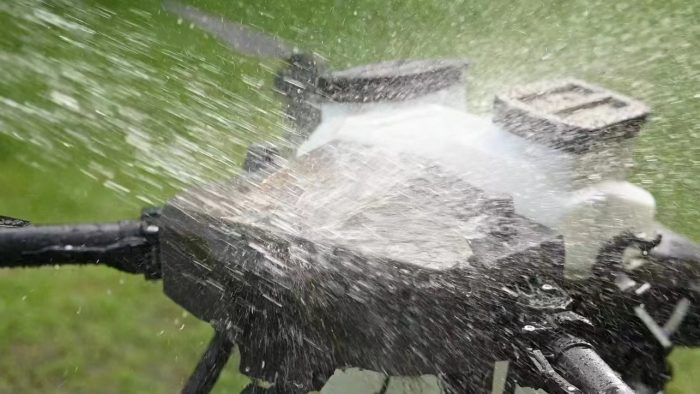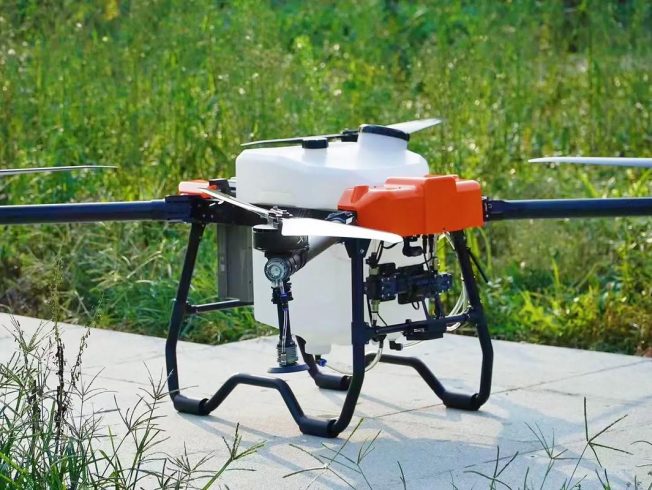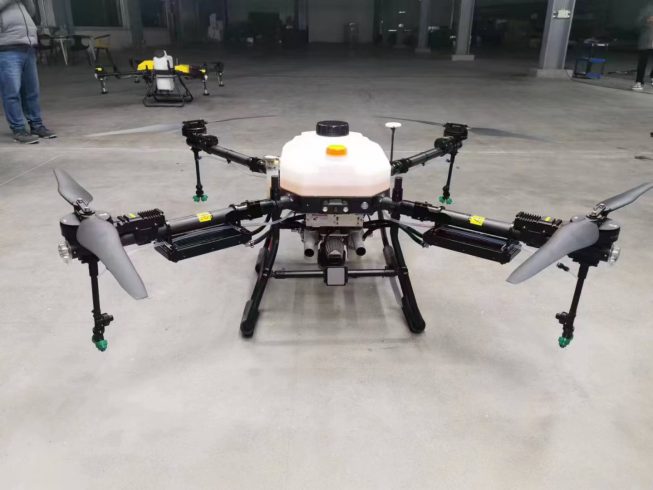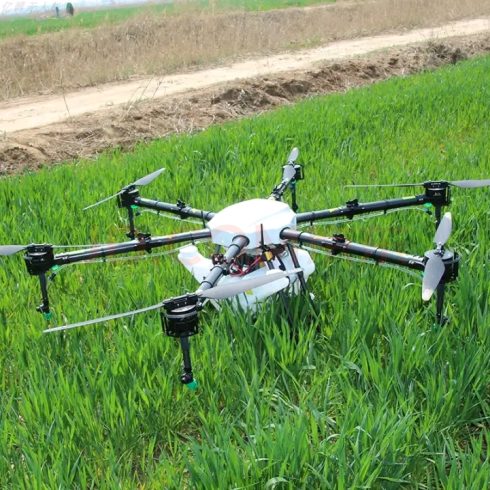![图片[1]-Integrating AI and IoT with Agricultural Spraying Drones: A Smart Farming Revolution-msoen](https://www.msoen.com/wp-content/uploads/2025/04/27fe7401e7184641-1024x768.jpg)
![图片[2]-Integrating AI and IoT with Agricultural Spraying Drones: A Smart Farming Revolution-msoen](https://www.msoen.com/wp-content/uploads/2025/04/2caef68db4184641-768x1024.jpg)
![图片[3]-Integrating AI and IoT with Agricultural Spraying Drones: A Smart Farming Revolution-msoen](https://www.msoen.com/wp-content/uploads/2025/04/0f937885e9184642-1024x849.jpg)
The Power of AI‑Driven Spray Optimization
Traditional drone sprayers rely on pre‑loaded maps and fixed nozzle settings—effective, but unable to adapt on the fly. AI integration elevates performance by:
- Real‑Time Crop Analysis: Machine‑vision cameras scan plant health indicators (leaf color, canopy density), while onboard AI models classify stress zones and adjust spray rates dynamically.
- Adaptive Route Planning: Instead of uniform grid patterns, AI algorithms refine flight lines mid‑mission to skirt around obstacles, concentrate treatment on outbreak hotspots, and minimize redundant coverage.
- Predictive Pest Mapping: By combining historical data (weather, soil conditions, past infestations) with current field imagery, AI forecasts where pests or diseases will emerge, allowing preemptive spot‑spraying runs.
SEO keywords:
agricultural drone AI, smart spraying drone, precision agriculture drone
2. IoT‑Connected Drone Fleets and Field Sensors
IoT connectivity transforms individual drones into a coordinated swarm and links them seamlessly with ground‑based sensors:
- Soil Moisture & Weather Stations
- Sensor nodes across the field stream real‑time moisture, temperature, and humidity data to your central dashboard.
- Drones query this data mid‑flight to choose droplet size or delay spraying in windy zones.
- Fleet Management Platforms
- Every UAV reports location, battery status, and spray payload to a cloud server.
- Automated task dispatch ensures that low‑battery units return home while fully charged drones take over, achieving true 24/7 coverage.
- Automated Data Logging
- Spray mission logs, sensor readings, and AI analyses are stored in secure databases.
- This audit trail simplifies compliance reporting and drives continuous optimization.
SEO keywords:
IoT agriculture, drone fleet management, connected farming
3. Key Benefits of AI‑IoT Drone Spraying
- Optimized Chemical Use: Studies show AI‑guided variable‑rate spraying can cut pesticide and fertilizer usage by up to 50%, reducing costs and environmental impact.
- Labor Savings: Fully autonomous missions require minimal human intervention. One operator can supervise multiple drones from a tablet, freeing staff for other tasks.
- Higher Yields & Quality: Precise, need‑based applications prevent over‑ or under‑treatment, leading to healthier crops and consistent harvests.
- Rapid ROI: With lower chemical bills and higher productivity, many farms recoup their investment in smart UAV sprayers within a single growing season.
4. Implementing an AI‑IoT Drone Sprayer Solution
Step 1: Assess Your Farm’s Digital Infrastructure
- Ensure reliable cellular or private‑network coverage.
- Install soil and weather sensors at representative field locations.
Step 2: Choose the Right Drone Platform
- Look for UAV sprayers with open‑API access, onboard GPU for AI inference, and standard IoT communication protocols (LoRaWAN, NB‑IoT).
- Verify compatibility with major farm‑management software.
Step 3: Calibration & Training
- Work with your technology provider to train AI models on your specific crop varieties and local pest profiles.
- Conduct supervised trial flights to fine‑tune nozzle settings and sensor thresholds.
Step 4: Scale Up Carefully
- Start with one or two drone units and a limited field area.
- Gradually expand your AI‑IoT network as you refine mission parameters and build historical data.
5. Real‑World Success: A Rice Farm Case Study
On a 200‑hectare rice estate, a grower deployed three AI‑enabled sprayer drones linked to 15 soil‑moisture sensors:
- Early Detection: AI algorithms identified initial leaf‐blast symptoms 5 days before visual signs appeared, enabling targeted fungicide spot‑sprays.
- Chemical Economy: Variable‑rate spraying reduced overall fungicide usage by 45%, saving thousands of dollars.
- Yield Increase: Uniform application and timely interventions led to a 12% boost in harvest weight compared to the previous season.
6. Future Trends: Toward Fully Autonomous Farms
The convergence of AI, IoT, and UAV spraying is just the beginning. Emerging capabilities include:
- Swarm Robotics: Multiple drones collaborating in real time, autonomously dividing fields into sectors and handing off tasks.
- Edge Computing: On‑drone AI inference for ultra‑low‑latency decision‑making, even without constant network connectivity.
- Blockchain Traceability: Immutable records of every spray mission, sensor reading, and yield outcome—ideal for organic certifications and food‑safety audits.
Conclusion
AI and IoT integration marks a new era for agricultural spraying drones—one where every drop of pesticide or fertilizer is optimized, every flight path is data‑driven, and every mission delivers measurable ROI. By adopting an AI‑IoT drone sprayer solution, farmers gain precision, efficiency, and sustainability that outpace traditional methods.
Ready to explore the future of smart spraying? Contact us for a personalized demo of our AI‑enabled UAV sprayers and start your journey toward a fully autonomous, high‑yielding farm.












暂无评论内容